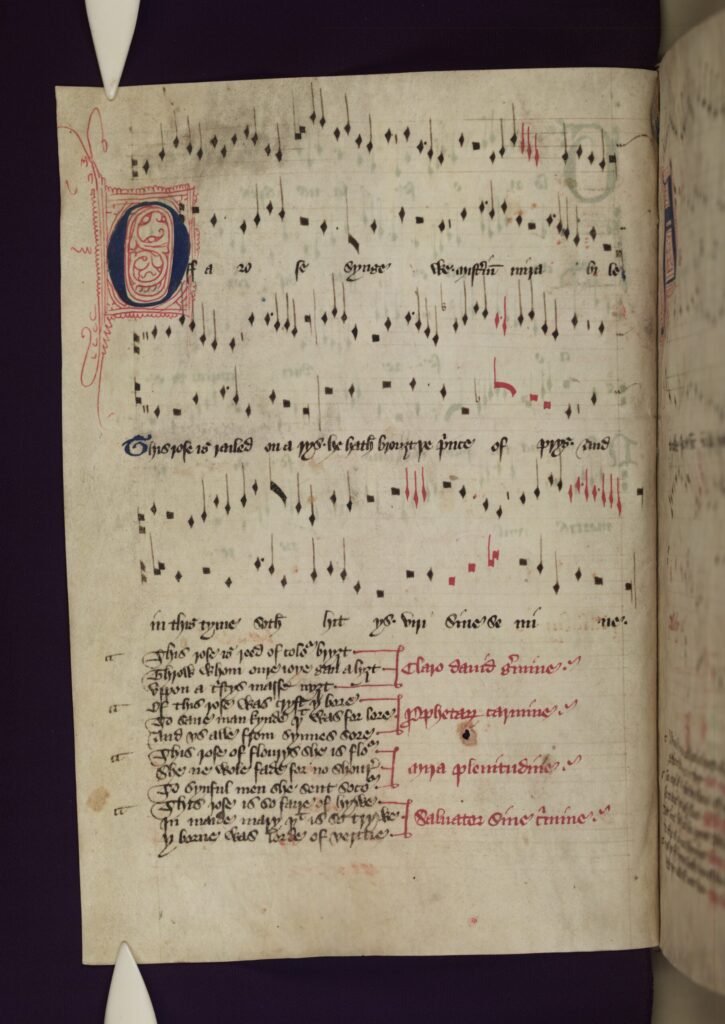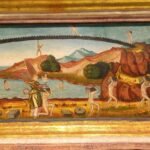In Bethlehem, that Fair City is a joyful tumble of cascading phrases for SSA voices, by Douglas Cook. As with many carols of this period, the text is macaronic i.e. in a mixture of languages, in this case English and Latin. (The well known Christmas song In Dulci Jubilo is another example of a macaronic carol, originally in German and Latin.) The Latin phrases of In Bethlehem are all the first lines of liturgical hymns that would have been sung regularly (according to a detailed schedule!) during daily ‘offices’, or prayer services, in the Roman Catholic tradition. The English words, which rhyme charmingly, first tell of the birth of Jesus, and then enjoin us both to serve God and to make merry.
You may be interested in reading about Edith Rickert (1871 – 1938), whose book Ancient English Christmas Carols: 1400 – 1700 (Chatto & Windus, London, 1914) is the source of most of the words that Douglas Cook uses in his setting. Born in Ohio, Rickert became a medieval scholar at the University of Chicago, and spent many years studying medieval literature (especially Chaucer) in England. She was also an excellent code-breaker, and worked as a cryptographer for the US government during World War I. Rickert said that the mindset for code-breaking had much in common with the techniques for analysing modernist literature.

Deciphering skills are certainly also required for understanding and creating modern editions of medieval music manuscripts. You can get some idea of the extent of the task from the illustration which shows a page from the Selden manuscript, one of our main sources of 15th century English carols. (The manuscript is held by the Bodleian Library, Oxford, and you can explore it further here.) Both the music notation and the lyrics are strange to modern eyes and ears. Modern editions translate the neume notation into the stave notation in use today, and generally also modernise the lyrics, at least to some degree.
The music to Douglas Cook’s setting of In Bethlehem, That Fair City is original, not transcribed from a manuscript. To my ears, the piece evokes the pealing of bells. The lyrics get passed between different voice parts, and all voices take their turn at joyful ascents as well as descents, coming together briefly at resting points before setting off again. The word “Alleluia” sounds throughout nearly the entire piece.
Douglas turned 90 last year, and I’m making an effort to get several more of his pieces into print while he can enjoy their publication. He was in at the beginning of Canasg, providing numerous well-crafted folk song arrangements as well as Christmas music. See in particular A Sequence of Carols, also available for SAA. The lyrical and quietly rapturous third movement of this sequence, I Sing of a Maiden (SAA in both versions), would make a great companion piece for In Bethlehem, that Fair City.
Endnote: the picture in the header is a painting of Bethlehem by the Russian landscape artist Vasily Polenov, 1882.


